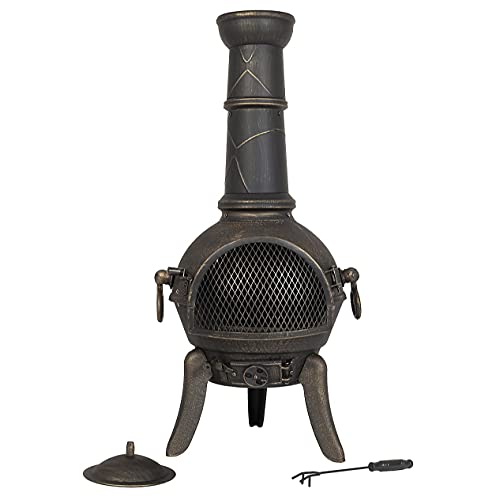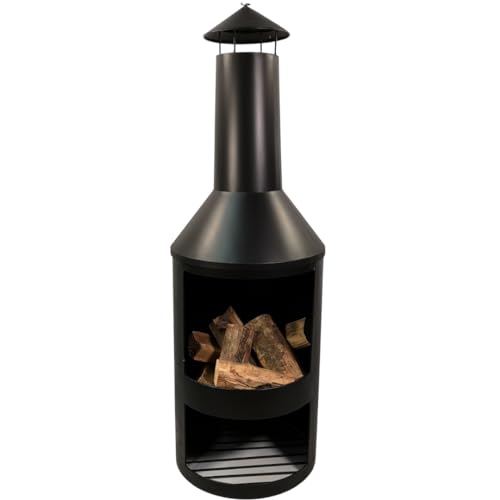원글
Chimineas Vs Fire Pits
Like a stove with a potbelly, chimineas have an opening in the front for stacking fuel, and an attached chimney that draws smoke upwards. They are available in a range of materials, including clay and terra cotta for an authentic look, or iron and cast iron for increased durability.

Clay models are fragile and require careful handling while metal versions are able to withstand higher temperatures and rougher handling. Both offer added warmth and ambience to outdoor spaces.
Chimineas
Chimineas, which are similar to fireplaces on a variety of levels, are designed for outdoor use. They provide an attractive appearance. They are typically made of clay or terra-cotta, and may be brightly decorated with Mexican-inspired themes. Modern chimineas tend to be constructed of materials like cast iron and aluminium which are more resistant to breakage and damage than clay.
The chiminea was originally an open fire, was developed in Mexico and Western states. They are typically used to entertain however they can also be a focal piece in any outdoor space. A chiminea's long chimney can draw smoke upwards and keeps it away from those who are seated around it, in contrast to fire pits that often have an open flame that could cause sparks and embers to spread across the ground and surrounding areas.
Both chimineas, and fire pits, bring warmth to outdoor spaces. However, they are different in terms of maintenance and advantages. Personal aesthetic preferences play an important part in this choice, since the
chiminea's intricate design can complement a range of different styles of gardens, while a fire pit's sleek, minimalist design is suited to a wide variety of outdoor spaces.
The different maintenance requirements between chimineas and fire pits also has much to do with the materials of each, as clay and terra-cotta are more prone to damage than aluminum and cast iron. Therefore, chimineas generally require more frequent maintenance than fire pits.
Both kinds of outdoor fireplaces are popular because they provide a warm and inviting area for family and friends to meet for dinners or drinks. However, a chiminea's more closed and contained design makes it ideal for more intimate groups and can be more efficient in warming the space. Its more pronounced safety benefits result from the fact that it offers greater protection against sparks and embers that could fly off the fire, and fire pits must be carefully placed to minimise this risk and must be monitored constantly.
Fire pits
You might have to decide whether you'd like to add an achiminea or fire pit when planning your outdoor area. Both options add warmth and elegance to a garden or patio however they differ in design, operation and the safety features. We'll help you select the right option for your space by examining initial costs, maintenance expenditures, fuel and much more. We'll also compare heat output, smoke, and safety.
A
largest chiminea or chimenea (pronounced che-mehn-ee-yah) is a freestanding, front-loading fireplace that comes with an chimney and can be used to cook. They can be constructed from clay, metallics like cast iron or steel, or cement or stone. They come in a variety of shapes, styles, and sizes, offering versatility to fit various outdoor decors. They can be insulated to offer the user with a sense of security and a controlled flame. This helps reduce the risk of sparks and increases safety.
Although chimineas are compatible with wood and charcoal, it is best to use seasoned logs or dried logs that have been kiln-fired. Moisture wood generates more smoke and heats less efficiently. Chimineas also require a bigger fire to keep them warm, which could result in a higher amount of smoke, however this can be reduced through the proper air flow, use of a log grate, and regular maintenance.
Fire pits can be constructed using a variety of materials and steel is the most well-known due to its strength and cost-effectiveness. Some
Fire pits & chimineas pits can be moved around while others are permanent fixtures. They are typically built into the ground or placed on a deck that is raised and come in a variety of shapes, sizes and finishes that match the various outdoor decors. They can be powered by gas, providing added convenience and control, or by wood and charcoal.
Although they may be less troublesome to maintain than chimineas but fire pits are considered to be more dangerous than Chimineas. The open design of fire pits can cause more sparks to fly which could pose a risk for children and pets. To avoid accidents, they must be placed away from flammable objects and be monitored constantly. They can also produce lots of smoke and ash which could cause discomfort for some people to be near.
Safety
Both chimineas, and fire pits can add warmth and awe to any outdoor space. However the use of them is not without dangers. Both are extremely hot, which is why you must be cautious when using them, particularly near children and animals. Both can be used with surfaces that are susceptible to cracking when heated (see below). It is therefore recommended to use a layer of bricks and stones beneath the fire pit. Both are prone to releasing a lot of smoke which can pose a problem for those living in areas with high winds. The chiminea has the advantage of having the fire contained within it, so it is less vulnerable to the winds blowing the embers and ash around. However, the opening is only one-sided and it is not possible to see the back, so it could be easy to leave a chiminea in a safe place in a chilly location.
Use only seasoned, kiln-dried logs for both types of fireplaces. They'll burn better and produce less smoke. Also be sure to avoid things that are flammable, such as wood, twigs, or rubbish that could quickly erupt into flames and trigger an unwelcome or potentially dangerous reaction.
Be aware of any local burning bans. They may be caused by adverse conditions, which are combined with high emissions and raise levels of fine particle pollution to dangerous levels. Breathing these harmful toxins can cause respiratory issues.

Keep an empty bucket of water or a garden hose handy in case the fire grows out of control. Make sure to keep the area surrounding your fire pit free of any branches or twigs that could catch fire. Also, it's recommended to keep an emergency kit in the event of in the event that anyone is injured by smoke or sparks. Chimineas and firepit will last for an extended period of time provided they are maintained properly. Cast iron chimineas are a more durable option for your patio than terracotta or clay which are less durable and may crack in high temperatures.
Maintenance
If your backyard fireplace or
biggest chiminea are not properly maintained, it can create serious hazards. If it is not properly used or placed too close to a house or other structures, it could cause a house fire and cause severe injuries or damages. It is crucial to ensure that only natural materials like wood can be burnt and that no trash, plastics or liquid fuels are allowed to be used. Check your local weather forecasts to find guidelines on when you can burn. In the event of an emergency, it's a good idea keep a fire extinguisher or hose within reach.
A chiminea is a traditional outdoor wood-burning fire, can add warmth and atmosphere in the patios and gardens. Chimineas come in a variety of styles and finishes. They are constructed of clay, metal, or cast iron. Many chimineas feature ornate, traditional designs that bring a rustic feel to the outdoor space. Chimineas are also believed to be more environmentally friendly than fire pits as they emit less smoke and particulate matter emissions.
To keep your chiminea in good condition, you should regularly clean it. Begin by removing any unburnt or ash from the inside of the grate. Then, you can start a small fire with a handful of pieces of firewood. Leave it to burn for about an hour then carefully dowse the flames with water to extinguish them completely. Let the chiminea's temperature to drop before lighting another fire.
Chimineas can be a stunning addition to any outdoor space, they require more maintenance than fire pits. To avoid rust or other damages caused by the elements, they must be cleaned regularly. Chimineas are also very fragile and could crack or break if not handled carefully.
The decision to buy an chiminea or a fire pit, ultimately rests on your personal preferences and your budget. Both options have their benefits however, you must consider the initial cost and long-term costs before choosing which is the best option for your home. If you are looking for a more permanent solution, you can consider a custom-built chiminea or a fire pit constructed from robust materials like stone or steel and is able to withstand the rigors of frequent use and extreme weather conditions.
